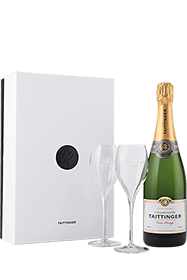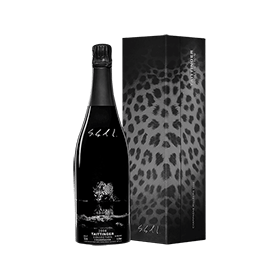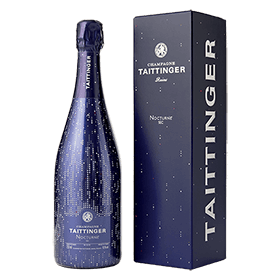A symbol of elegance, Maison Taittinger is one of the jewels of the Champagne heritage. Between tradition and innovation, this family-owned house crafts a collection of exceptional champagnes.
Champagne Taittinger: A Unique and Timeless Legacy
Founded in 1734 in Reims under the name Forest-Fourneaux, Champagne Taittinger is one of the oldest champagne houses. In 1932, visionary businessman Pierre Taittinger acquired the estate and attached his name to it, marking the beginning of a new era. Still family-owned today, the house is led by Vitalie Taittinger, who passionately continues the family legacy.
An Exceptional Terroir
Maison Taittinger stands out for its unique terroir, located in the heart of Reims on gently sloping hills with optimal sun exposure. The region’s characteristic chalky soil provides ideal drainage, contributing to the extreme finesse of each cuvée. The house selects outstanding parcels, including the Côte des Blancs for its Chardonnay, as well as the Vallée de la Marne and Montagne de Reims for Pinot Noir and Meunier.
A Masterful Composition for a Unique Signature
Taittinger champagnes are distinguished by extended aging, often beyond the requirements of the appellation. This bottle aging, carried out in the house’s ancient chalk cellars, enhances the complexity and elegance of these precious wines.
Whether Brut, Blanc de Blancs, or Taittinger Rosé, each cuvée is an elegant invitation to explore the diversity of Champagne’s finest terroirs, where the finesse of Chardonnay and the precision of Pinot Noir harmoniously blend.
Exceptional Bottles with Multiple Expressions
Taittinger Brut Champagnes: Balance and Vibrancy
Brut Réserve – A Symbol of Balance: This Taittinger brut champagne is characterized by its finesse and harmony. Assembled from over 35 crus and aged for three years in the house’s cellars, it expresses exquisite maturity through delicate aromas of fresh fruit and brioche.
Brut Millésimé – An Ode to Complexity: Crafted from a rigorous selection of Premier and Grand Crus, this vintage champagne undergoes five years of cellar aging. Its complex nose is beautifully complemented by a fresh, fruity palate with a persistent finish.
Taittinger Prestige: A Unique Expression
Brut Prestige, a refined champagne: A precise blend of around 50 crus gives this champagne its elegance and finesse. With a high proportion of Chardonnay (40%), it is a rarity among non-vintage champagnes. After three to four years of aging, it reveals a pale gold color, a generous nose of yellow fruits, vanilla, and brioche, and a fresh, harmonious palate with delicate fruit and honey notes. Elegant and accessible, it is also available in magnum format.
Prestige Rosé – A Balance of Freshness and Roundness: Prestige Rosé stands out with its rich aromatic palette and elegance. Comprising 30% Chardonnay and 70% Pinot Noir, including 15% vinified as red wine, it reveals a subtly fruity nose and a balanced, lively palate.
Comtes de Champagne: Excellence as Its Emblem
Comtes de Champagne Blanc de Blancs, a Champagne gem: Elegance and rarity define this champagne, exclusively sourced from the five Grand Crus of the Côte des Blancs. After ten years of aging in Gallo-Roman chalk cellars, it reveals a complex bouquet of pear, citrus, and toasted notes. On the palate, its freshness and tension elevate intense fruity flavors.
Comtes de Champagne Rosé, an eminent gastronomic rosé: Combining the power of Pinot Noir from the Grand Crus of the Montagne de Reims with the finesse of Chardonnay from the Côte des Blancs, this exceptional rosé dazzles with its refined brilliance. Made with Pinots from Bouzy vinified as red wine, this vintage cuvée showcases a golden hue with red reflections, a complex nose, and a silky, balanced palate with mineral freshness.
With a rich heritage, savoir-faire passed down through generations, and a visionary spirit, Maison Taittinger has established itself as an essential reference in the world of champagne, captivating both enthusiasts and connoisseurs.
















